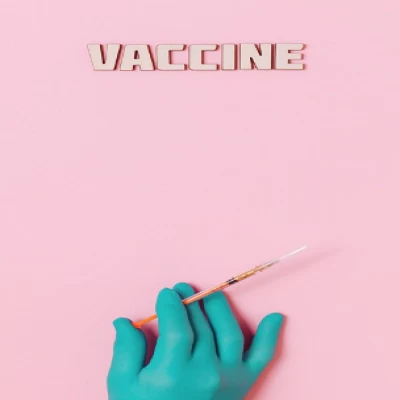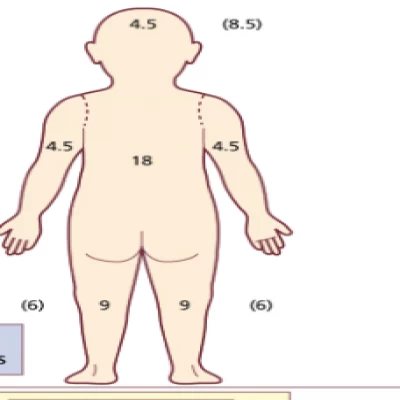مجلات علمية

Atopic Dermatitis| Causes Symptoms and How to Treat
Everyone wishes for healthy skin without any dermal disease. Atopic dermatitis is the most common inflammatory skin disease causing rash, itching, and dryness.
What is atopic dermatitis?
It is a chronic skin disease that causes red and itchy skin. It usually affects children but it may occur at any age. It may be accompanied by fever and asthma.
Causes of atopic dermatitis
The normal healthy skin helps retain moisture and protects you from bacteria, allergens, and irritants.
Atopic dermatitis or eczema as also called is related to a gene variation that affects the skin's ability for this protection. So, any environmental factors and irritants affect the skin.
Also, food allergens may cause eczema in some children.
Risk factors for atopic dermatitis
The main risk factor for atopic dermatitis is having a family history of eczema, allergies, hay fever, and asthma.
Signs and symptoms of atopic dermatitis
They vary from one person to another which include:
1-Thickened, cracked, scaly skin
2-Raw, sensitive, swollen skin from scratching
3-Small, raised bumps that leak fluid and crust over when scratched
4-Dry skin
5-Itching, which may be severe, especially at night
6-Red to brownish-gray patches, especially on the hands, feet, ankles, wrists, neck, upper chest, eyelids, inside the bend of the elbows and knees, and in infants, the face and scalp.
Atopic dermatitis often begins in children below 5 years which may persist into adolescence and adulthood.
But for some people, it flares periodically and then clears up for a time, even for several years.
When does the patient need to visit the dermatologist?
1-If it becomes uncomfortable affecting daily activities and sleep.
2-Continuous symptoms after using home remedies.
3-If it causes a skin infection with red streaks, pus, yellow scabs.
4-For the children, you should have immediate medical attention if a hay fever was noticed.
Complications of atopic dermatitis
Atopic eczema has many complications that include:
Asthma and hay fever
More than half of children that have atopic dermatitis develop asthma and hay fever by age 13.
Skin infection
Repeated scratching breaks the skin which causes open sores and cracks that increase the infection from bacteria and viruses, including the herpes simplex virus.
Chronic itchy, scaly skin
Neurodermatitis (lichen simplex chronicus)
is a skin condition that starts with a patch of itchy skin, you scratch the area, which makes it even itchier.
Eventually, you may scratch simply out of habit. This condition causes the affected skin to become discolored, thick, and leathery.
Irritant hand dermatitis
This affects people whose hands are often wet and exposed to harsh soaps, detergents, and disinfectants.
Allergic contact dermatitis
It is common in people with atopic dermatitis.
Sleep problems
The itch-scratch cycle causes sleep anxiety.
Diagnosis of atopic dermatitis
It doesn't need a special lab test to identify atopic dermatitis. The doctor makes the diagnosis by examining the skin and reviewing your medical history.
They may use patch testing or other tests to rule out other skin diseases or identify conditions that accompany your eczema.
If you suspect a certain food causes your child's rash, tell the doctor and ask about identifying food allergies.
Treatment of atopic dermatitis
It is a persistent disease that needs months or even years to control.
The signs and symptoms are flares that return even after successful treatment. It is divided into:
medications
1-Creams help in controlling itching and repairing the skin.
It may be a corticosteroid cream or ointment, using it after moisturizing the skin. Overuse of this drug thinning skin.
There are other creams containing calcineurin inhibitors like tacrolimus (Protopic) and pimecrolimus (Elidel) that affect the immune system.
They are used by people older than age 2 to control skin reactions. Apply it after you moisturize. Avoid strong sunlight when using these products.
2-Drugs to fight infection
Patients may need an antibiotic cream if there is a bacterial infection, open sores, or cracks. It is recommended to take oral antibiotics for a short time to treat the infection.
3-Oral drugs that control inflammation
oral corticosteroids such as prednisone are prescribed for more severe cases.
These drugs are effective but can't be used for a long time because of their potentially serious side effects.
4-A newer option for severe eczema
The (FDA) has recently approved a new, injectable biologic (monoclonal antibody) called dupilumab).
It is used to treat people with severe cases who do not respond well to other medications.
This is a newer medication. Studies have shown it to be safe if used as directed but It is very expensive.
Therapies which include
1-Light therapy
It is used for people who don't get better with topical treatments and who rapidly flare again after treatment.
It occurs by exposing the skin to controlled amounts of natural sunlight. Other forms use artificial ultraviolet A (UVA) and narrowband ultraviolet B (UVB) alone or with medications.
Phototherapy is less commonly used in young children with atopic dermatitis and not given to infants due to its harmful effects in the long term use including premature skin aging and an increased risk of skin cancer.
2-Wet dressings
It is an intensive treatment for severe atopic dermatitis involving wrapping the affected area with topical corticosteroids and wet bandages.
Sometimes, you need a hospital for people with widespread lesions because it's labor-intensive and requires nursing expertise, or ask the doctor about a technique to do it at home.
3-Relaxation, behavior modification, and biofeedback
These methods help people with scratching habitually.
4-Counseling
It is by visiting a therapist or another counselor to help embarrassed people and frustrated by their skin condition.
Treatment of infant atopic dermatitis (eczema)
1-Lubricating baby's skin with bath oils, creams, or ointments.
2-Identifying and avoiding skin irritants.
3-Avoiding extreme temperatures.
You should see a doctor if these methods don't improve the rash or if the rash became infected.
The baby may need a prescription medication to control the rash or to treat an infection.
The doctor may also recommend an oral antihistamine to help decrease the itch and to cause drowsiness, which may be helpful for nighttime itching and discomfort.
Prevention
These tips may help prevent bouts of atopic dermatitis (flares) and minimize the drying effects of bathing:
1-Use Moisturizer on your skin at least twice a day.
2-You should know and avoid triggers that worsen the condition.
3-Take shorter baths or showers.
4-Take a bleach bath.
5-Use only gentle soaps.
6-Dry yourself carefully.
Summery
Atopic dermatitis is a chronic disease. You should be patient and learn to handle it by taking suitable medications for the case to get better.






